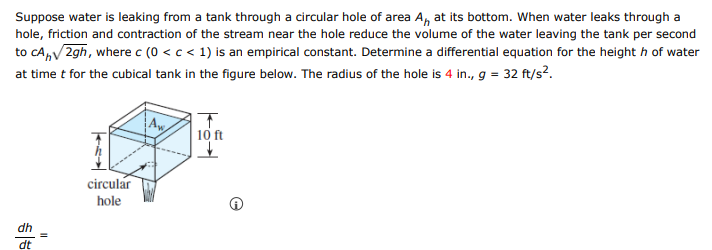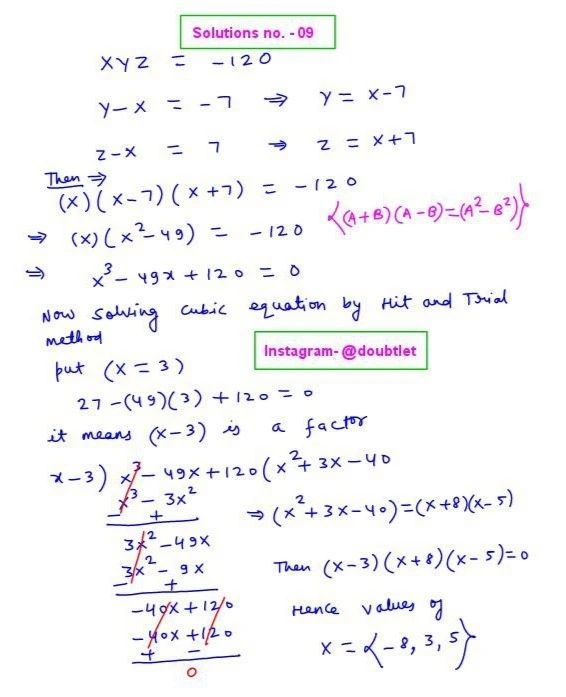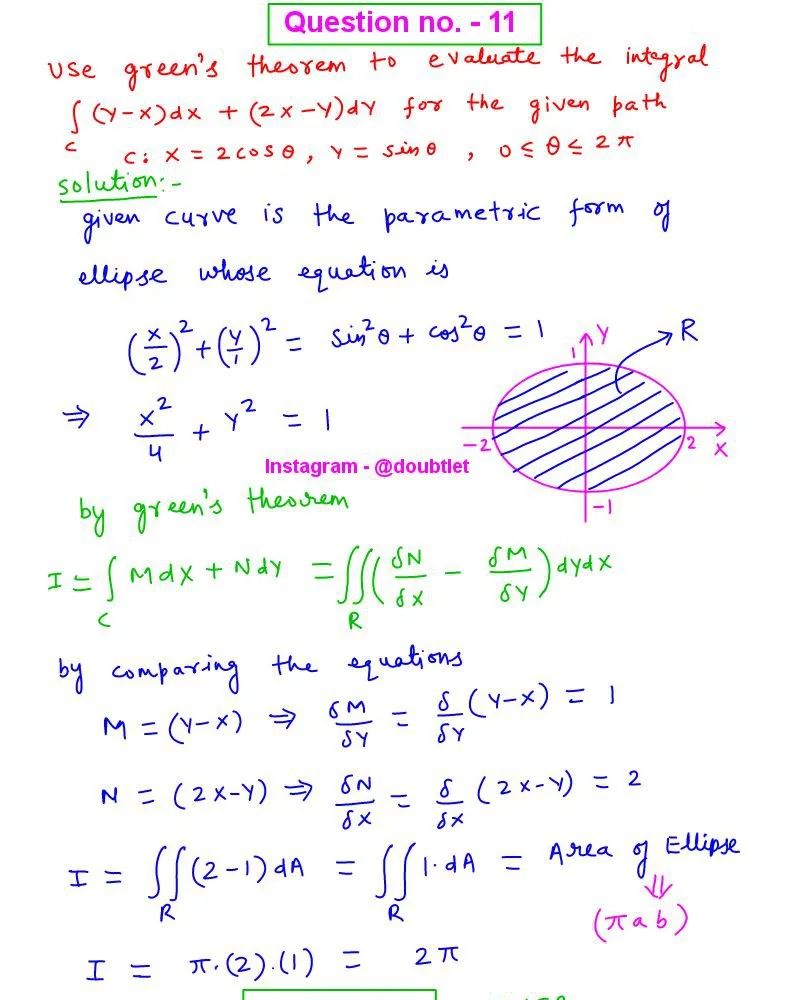









Suppose water is leaking from a tank through a circular hole of area at its bottom. When water leaks through a hole, friction and contraction of the stream near the hole reduce the volume of the water leaving the tank per second to , where (with ) is an empirical constant. Determine a differential equation for the height of water at time for the cubical tank in the figure below. The radius of the hole is 4 in., g = 32 ft/
Suppose water is leaking from a tank through a circular hole of area at its bottom. When water leaks through a hole, friction and contraction of the stream near the hole reduce the volume of the water leaving the tank per second to , where (with ) is an empirical constant. Determine a differential equation for the height of water at time for the cubical tank in the figure below. The radius of the hole is 4 in., g = 32 ft/
Question :
Suppose water is leaking from a tank through a circular hole of area at its bottom. when water leaks through a hole, friction and contraction of the stream near the hole reduce the volume of the water leaving the tank per second to , where (with ) is an empirical constant. determine a differential equation for the height of water at time for the cubical tank in the figure below. the radius of the hole is 4 in., g = 32 ft/

Solution:

Neetesh Kumar | November 08, 2024
Differential Equation Homework Help
This is the solution to Math 2A, section 13Z, Fall 2023 | WebAssign
Math002ACh1Sec03 (Homework) Question - 5
Contact me if you need help with Homework, Assignments, Tutoring Sessions, or Exams for STEM subjects.
You can see our Testimonials or Vouches from here of the previous works I have done.
Step-by-Step-Solution:
Let be the water height in the tank at time . The volume of water in a cubical tank with a square base of side length and height is given by:
The area of the circular hole can be calculated as follows:
-
Convert the radius of the hole from inches to feet:
-
Calculate the area of the hole:
Step 1: Determine the Rate of Change of Volume
The rate of water leaving the tank per second through the hole is given by:
Step 2: Relate Volume to Height
Since the volume of the tank is given by , the rate of change of volume can also be expressed as:
Step 3: Set the Two Expressions for Volume Change Equal
Setting the two expressions for equal gives us:
Step 4: Substitute for
Now substituting into the equation gives:
Step 5: Rearrange the Equation
Rearranging gives us the differential equation:
Conclusion
The differential equation governing the height of water in the tank at time is:
where
Here, .
Please comment below if you find any error in this solution.
If this solution helps, then please share this with your friends.
Please subscribe to my Youtube channel for video solutions to similar questions.
Keep Smiling :-)
Comments(0)



Leave a comment